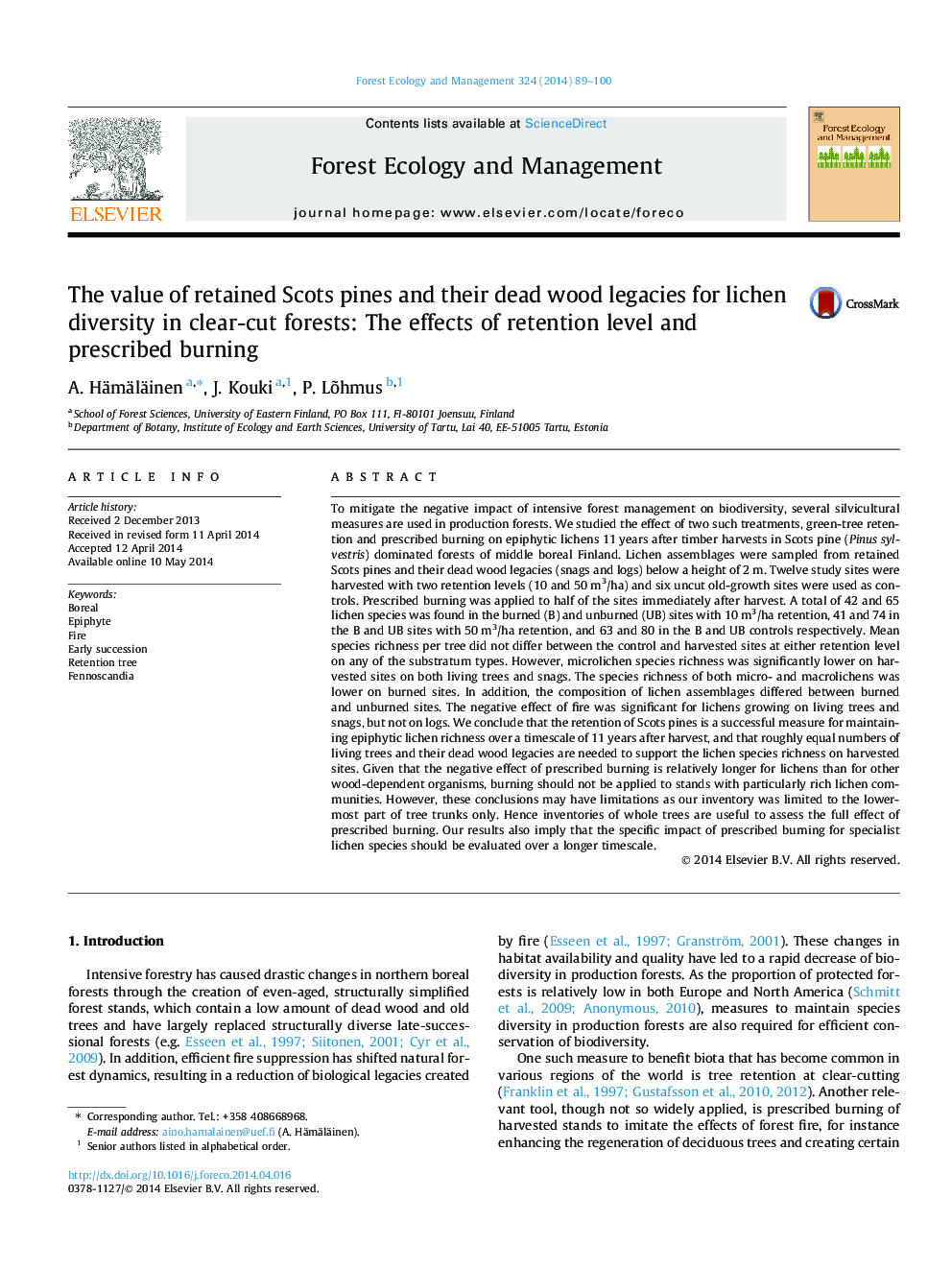| کد مقاله | کد نشریه | سال انتشار | مقاله انگلیسی | نسخه تمام متن |
|---|---|---|---|---|
| 86628 | 159200 | 2014 | 12 صفحه PDF | دانلود رایگان |
• We studied the effects of tree retention and fire on bark and wood dwelling lichens.
• Retained Scots pines sustained lichen diversity within a decade after harvest.
• Both living trees and their dead wood legacies are needed to support species richness.
• Fire decreased species richness and changed community composition.
• At the studied timescale fire did not benefit threatened or specialist lichen species.
To mitigate the negative impact of intensive forest management on biodiversity, several silvicultural measures are used in production forests. We studied the effect of two such treatments, green-tree retention and prescribed burning on epiphytic lichens 11 years after timber harvests in Scots pine (Pinus sylvestris) dominated forests of middle boreal Finland. Lichen assemblages were sampled from retained Scots pines and their dead wood legacies (snags and logs) below a height of 2 m. Twelve study sites were harvested with two retention levels (10 and 50 m3/ha) and six uncut old-growth sites were used as controls. Prescribed burning was applied to half of the sites immediately after harvest. A total of 42 and 65 lichen species was found in the burned (B) and unburned (UB) sites with 10 m3/ha retention, 41 and 74 in the B and UB sites with 50 m3/ha retention, and 63 and 80 in the B and UB controls respectively. Mean species richness per tree did not differ between the control and harvested sites at either retention level on any of the substratum types. However, microlichen species richness was significantly lower on harvested sites on both living trees and snags. The species richness of both micro- and macrolichens was lower on burned sites. In addition, the composition of lichen assemblages differed between burned and unburned sites. The negative effect of fire was significant for lichens growing on living trees and snags, but not on logs. We conclude that the retention of Scots pines is a successful measure for maintaining epiphytic lichen richness over a timescale of 11 years after harvest, and that roughly equal numbers of living trees and their dead wood legacies are needed to support the lichen species richness on harvested sites. Given that the negative effect of prescribed burning is relatively longer for lichens than for other wood-dependent organisms, burning should not be applied to stands with particularly rich lichen communities. However, these conclusions may have limitations as our inventory was limited to the lowermost part of tree trunks only. Hence inventories of whole trees are useful to assess the full effect of prescribed burning. Our results also imply that the specific impact of prescribed burning for specialist lichen species should be evaluated over a longer timescale.
Journal: Forest Ecology and Management - Volume 324, 15 July 2014, Pages 89–100
